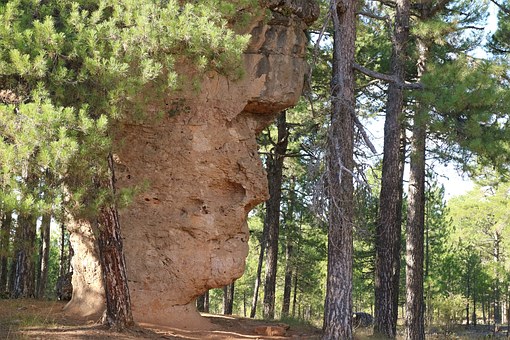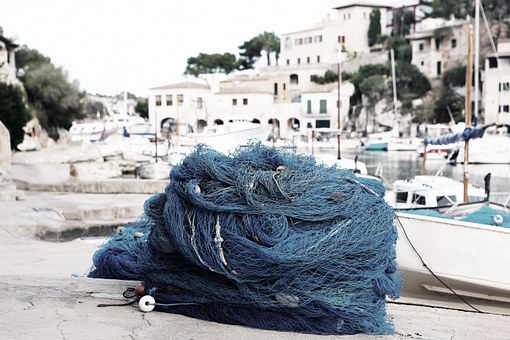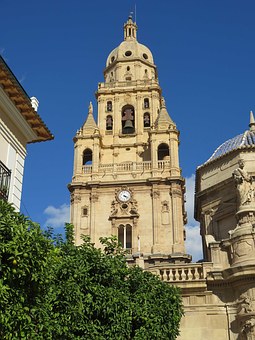Asturias Travel: A Bicycling Adventure On The Bear Trail

After a nice day of discoveries in Oviedo and Gijn
, a grey sky and drizzly weather greeted me on this late May morning, and I enjoyed my hearty breakfast buffet at the Barcelo Oviedo Cervantes Hotel before I was scheduled to head off on a bicycling adventure to explore some of the amazing outdoor opportunities that travel in Asturias has to offer. Punctually at 9:30 am I met my guides for today: Tito Conde who runs an outdoor adventure company called www.deporventura.com, and his friend Estefania, an English and gym teacher who Tito brought along to facilitate language communication. Fortunately, my Spanish is pretty passable so we had no major communications problems.All three of us headed off in Titos van to the start our bicycling tour of the Senda del Oso, the Bear Trail, which was roughly 30 minutes from Oviedo, the capital of Asturias. Along the way we stopped in a small village where Tito pointed out a lavadero, a traditional stone basin that was used for washing laundry manually in the early part of the 20th century. From the inscription we could see that this open-air laundry-washing facility was actually donated by a local doctor Antonio Fernandez for the benefit of the village.
On the other side of the brook, Tito pointed out a so-called horreo, a wooden grain storage building on stilts that would protect the harvest from mice and other animals. The elevated position of this structure also provides protection against any humidity from the ground. These horreos are typical of Asturias and can be found all over this northern Spanish province.
A few minutes later we were ready to start biking. We were greeted by some colleagues of Titos, a young man by the name of Alex from a company called www.mov-e.es which produces pedal-assisted electric bikes, as well as Ana Fernndez-Villasuso from Turismo Asturias who was going to accompany us as our local tourism expert. We hopped on the bikes and cycled up the hill to get on the Bear Trail, a former railway line that has been turned into a recreational path. This was my first time on an electrical bicycle and it was absolutely incredible how easy it was to tackle the incline, it required no effort at all!

As we started cycling on this 22 kilometre long trail, Alex and I talked about electrical bicycles and the fact that Spain is a leader in renewable energy. The bicycles from mov-e are manufactured in Spain and the motor is made by Panasonic. All the bicycles are assembled right here in Asturias and mov-e is now getting ready to produce electrical vehicles as well. According to Alex, many hotels and tourism organizations are now buying these types of bicycles to rent them to tourists. Asturias is a very mountainous region, but in the central part of Asturias it is even possible to use electric bicycles for daily commuting. The future is bright for mov-e and for renewable energy in Spain.
As we were pedalling I started chatting with Ana who explained the main sights of the Bear Trail to me. The starting point of our bicycling route was right next to a large enclosure that holds three brown bears, two females named Tola and Paca, and a male by the name of Furaco. Cantabrian bears are indigenous to Northern Spain and Furaco was brought here from the mountains of Cantabria. There was hope at some point that Furaco and Tola would have some offspring because they started to take a liking to one another, but so far their courtship has not produced any baby cubs.
Cow bells were ringing all around us as we cycled along the Bear Trail. Asturias is particularly famous for its milk production, and cows are still grazing free on the slopes of the steep mountains here. Ana and I started talking about travel opportunities in Asturias. The provinces slogan Asturias Paraso Natural (Natural Paradise) is a perfect way of describing this mountainous province. The south of Asturias is dominated by the Picos de Europa (literally translated: the Peaks of Europe) mountain chain which are now protected by the Picos de Europa National Park which is shared by three autonomous Spanish communities: Asturias, Cantabria and Len. Indeed, 33% of Asturias surface area is protected nature area. Just a short distance from the Atlantic coastline, the mountains stretch up to a height of over 2,600 metres (8,500 feet).
Outdoor adventurers love Asturias because it offers great opportunities for hiking, bicycling, mountaineering, caving and many other nature activities. Canoeing, kayaking and canoeing are also popular activities on the rivers that cross this mountainous terrain. Many wild animals still live in this mostly untouched region: wolves, chamois, eagles, wild boars and bears are among the species that call this are home.
Then Ana and I touched on the subject of Asturian cuisine. After working out in the wild outdoors, hikers can satisfy their hunger with hearty Asturian stews. The most famous regional dish is fabada, a savoury stew made of white beans with ham, blood sausage and Spanish chorizo sausage. Pote is another thick stew that is also made with beans and kale. Sidra (fermented apple cider) is the drink of choice in Asturias. And rice pudding provides a sweet-tasting ending to many Asturian meals. These tasty dishes will definitely stick to your ribs and give you energy for a long hard day in the mountains.
As we cycled through some of the former railway tunnels on the Bear Trail Ana also touched on the cultural travel opportunities of Asturias. Asturias has been inhabited for many thousands of years. Prehistoric caves with paleolitic cave paintings that are up to 24,000 years old can be visited in Ribadesella, close to the Atlantic coast. About 2000 years ago, the ancient Romans also left their traces here. And the Spanish Reconquest began in Asturias in 722 when Don Pelayo won a critical battle over the Muslim Moors in the famous Battle of Covadonga, founding the Asturian kingdom and establishing the beginnings of Christianity in Spain.
One of the main attractions in Asturias are its amazing Pre-Romanesque monuments; churches such as Santa Maria del Naranco or San Miguel de Lillo, both near Oviedo, were built around 848 AD and are precursors of Romanesque architecture that would not be found in other areas until 200 years later. Based on their architectural and historic significance, these structures have been designated as UNESCO World Heritage Sites and draw many thousands of tourists every year.
Ana continued to explain that medieval art is also well represented, for example, in the Cathedral of Oviedo and many other church buildings throughout Asturias. The big Asturian cities of Oviedo, Gijn, Aviles and others offer tremendous cultural programs, including music, opera, galleries and theatre. Among the most famous recent contributions to Asturian culture are the Prince of Asturias Awards that have been awarded every year since 1981 for outstanding achievements in such fields as art, communications and humanities, international cooperation, literature, social sciences, sports, technical and scientific research and human understanding. Over the years award winners have included Nelson Mandela, Al Gore, Bill Gates, Woody Allen, Bob Dylan, Pedro Almodvar, Rafael Nadal and many others.
Cycling along the scenic Senda del Oso, Ana and I also discussed another popular type of travel in Asturias: pilgrimage travel. The famous Camino de Santiago (the Way of St. James), one of Europes most important pilgrimage routes, has experienced a tremendous resurgence in recent years. It now attracts a new wave of pilgrims, many of them modern professionals who have been burnt out in the corporate rat race and need to get away from it all to reflect and put their lives in perspective.
The most popular and well-known route of the Camino is the Camino Francs (The French Way) that comes from Paris via Arles and Saint Gilles and goes south of the Cantabrian mountain chain through Pamplona, Burgos and Len to its end point in Santiago de Compostela. A less well known is the Northern or Coastal Route (the Camino del Norte, or Camino de la Costa) that runs along the Atlantic coastline and cuts right through Asturias.
This route of the Camino is much less crowded that the Camino Francs and is also equipped with many pilgrims hostels. The pilgrims hostels provide extremely basic accommodation at very low rates (about 3 to 7 Euros a night) to any of the pilgrims that carry the credencial, the pilgrims passport. Some of the hostels are funded by donations and are completely free of charge.

Many retired people walk to Santiago de Compostela on the French Way and return on the Northern Route. Nowadays, the Way of Saint James is no longer reserved to pilgrims traveling on foot, there are now various companies offering tours on the Camino by horse and by bicycle. Ana explained that on foot the Spanish pilgrimage to Santiago takes about one month and by bicycle it takes about 15 days. Pilgrims have to complete at least 100 km of the route, while bicyclists need to cover at least 200 km to qualify as bona fide pilgrims.
At a particularly scenic part of the Bear Trail we stopped to admire two tall rock walls that formed a gorge, with the river below. From here we also looked ahead to a couple of the former railway tunnels that were part of this train route. A few minutes away we stopped in a small local village called Caranga where we were going to grab lunch. Unfortunately the restaurant called La Casa al Cura was closed on this Wednesday, so we had to delay our meal.
Our next adventure would be a drive into the mountains in Titos van to show me some of the Asturian landscapes from high above.
by: arther
#
2
CBD exceeded my expectations in every way thanks. I've struggled with insomnia in the interest years, and after demanding CBD like https://www.cornbreadhemp.com/collections/thc-gummies for the first mores, I finally experienced a busty eventide of restful sleep. It was like a force had been lifted misled my shoulders. The calming effects were calm after all profound, allowing me to drift slow obviously without sensibilities confused the next morning. I also noticed a reduction in my daytime apprehension, which was an unexpected but allowed bonus. The taste was a fraction rough, but nothing intolerable. Overall, CBD has been a game-changer in compensation my nap and solicitude issues, and I'm appreciative to procure discovered its benefits.
2024-5-25 13:51
reply
#
3
CBD exceeded my expectations in every way thanks. I've struggled with insomnia looking for years, and after infuriating CBD like because of the first time, I lastly practised a loaded eventide of pacific sleep. It was like a force had been lifted off my shoulders. The calming effects were gentle still profound, allowing me to inclination off obviously without feeling punchy the next morning. I also noticed a reduction in my daytime desire, which was an unexpected but receive bonus. The partiality was a flash rough, but nothing intolerable. Comprehensive, CBD has been a game-changer in compensation my slumber and solicitude issues, and I'm appreciative to arrange discovered its benefits.
2024-5-29 14:08
reply
#
4
https://www.cornbreadhemp.com/pages/how-to-store-thc-gummies acquire fit a go-to seeking me, contribution a convenient, rags way to enjoy CBD’s benefits. I appreciate how judicious they are, so I can blast off them anytime, anywhere. Themselves, they’ve helped me relax and improved my siesta quality. I also like that each gummy has a jell amount of CBD, which makes it relaxed to run down my intake. An eye to anyone interested in tiresome CBD, gummies order in the interest a glassy starting point. Proper a tip: lead for a estimable brand to secure distinction and effectiveness!
2024-11-28 09:54
reply
Muscat Holidays-somehow Offbeat But Totally Engrossing Car Rental Services The Best Way To Travel The most popular tourist attractions in Mauritius Benefits Of Travel Systems For Babies Why Yatra Coupons Make Travel Shopping A Breeze Voluntourism- Plan Your Volunteer Travel To Africa to Assist Help-Starving People Things To Remember When Travelling To Nottingham Ha Giang promotes sustainable tourism Road Travel Convenient Option Nainital To Delhi Cheap Travel Online South Africa v Mexico Travel To India Cheap International Tour Packages Asturias Travel: A Visit To Gijn, The Largest City In Asturias